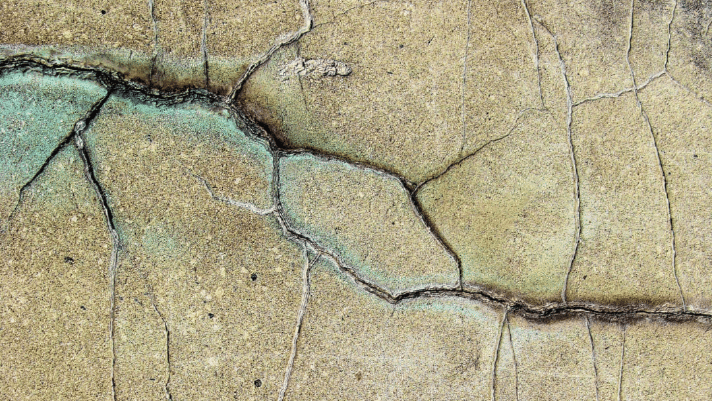What Is the Best Concrete Crack Repair?
Concrete is a vital construction material extensively used in buildings, roads, bridges, and dams. However, like most commonly used construction materials, concrete may develop cracks over time. Cracks that are not repaired can continuously expand until it becomes dangerous enough to cause structural failure. If the cracks are in a walkway, patio, or driveway, failure to repair them can lead to a tripping hazard. Repairing cracked concrete is both time and cost-constrained, and as such, adopting the right concrete crack repair method is important so as to significantly save time, money, and energy while producing a long-lasting result.
Understanding the type and nature of cracks that have occurred in a building is the first step toward selecting the most effective method of concrete crack repair. Common crack types include horizontal, vertical, diagonal, and step cracks.
If you have a cracked concrete surface, you may not know where to begin with the repair process. Luckily, there are a few concrete crack repair methods that you can use. A simple concrete crack repair for a small vertical or diagonal crack without signs of distress may involve filling voids with additional concrete to keep moisture out. Otherwise, the following top crack repair methods are usually adopted.
Selecting the best concrete crack repair method is vital if you want great results. Here are four top concrete crack repair methods you can use.
1. Epoxy Injection
Epoxy injection for concrete crack repair is useful for filling cracks as narrow as 0.002 inches (0.05 mm). The technique here generally involves establishing entry and venting ports at close intervals along the cracks, sealing the crack on exposed surfaces, and subsequently injecting the epoxy under pressure. The resin hardens and seals the crack from the inside. However, unless the underlying cause of the cracking has been corrected, it will probably recur near the original crack.
The first step of the process is cleaning and drying the opening. That allows the epoxy to bond properly to the concrete.
Next, we mix and prepare the epoxy resin according to the manufacturer’s instructions. Then, we apply it to the crack using a special injection gun. Finally, we let the epoxy cure and harden. Epoxy resins can lose strength when exposed to fire and high temperatures. Thus, you may need fireproofing if you want epoxy injections to be durable.
Our contractors are skilled in using epoxy injections to repair concrete cracks. Epoxy injections aren’t a suitable concrete crack repair method if:
- Cracks are active
- There are many cracks
- There is an uncontrolled water leakage
The efficiency of epoxy injection is greatly affected by problems such as silt contamination and leakage, both of which need to be fixed for epoxy injection to last. This crack repair method requires someone with the right combination of skills, discipline, and tact for successful execution.
This method is unsuitable if cracks are active and in large numbers, as well as if water leakage cannot be controlled. On exposure to fire and elevated temperature, epoxy resins lose strength significantly and thus may require fireproofing.
2. Routing and Sealing
Routing and sealing are some of the best concrete repair methods. A primary advantage of routing and sealing is that it’s relatively fast and simple.
Start by using a routing tool to cut a V-shaped groove along the length of the crack. Doing so helps to create a clean, smooth surface for the sealant to adhere to.
Afterward, prepare the sealant and apply it to the groove. Follow the manufacturer’s instructions for mixing and applying the concrete sealer. Then, allow it to cure. Don’t use routing and sealing for major repairs. Rather, make use of it only for small cracks.
The idea here is to treat the crack like a joint. The technique simply involves enlarging the cracks on the surface and then sealing them with a joint sealant. However, it is vital to adopt the right width-to-depth aspect ratio when sealing the joint so as to leave enough room for movement. This method is unsuitable for structural repair, serving only as a remedy for minor cracks.
3. Stitching the Crack
Just like the name implies, the crack can be stitched as a form of repair. The procedure involves drilling an entry and exit hole across the cracked surface and running a number of U-shaped metallic staples through the holes, anchoring them firmly in the hole using either an epoxy-based system or grout. This repair method is efficient and long-lasting.
The stitching process can be done on both, new and old concrete, and it is a cost-effective and efficient way to repair and reinforce concrete structures. It is also a non-disruptive method, which means that the stitching can be done without causing much disturbance to the surrounding area.
4. Drilling and Plugging
This method is recommended for its cost and time efficiency. However, it is only suitable for repairing vertical cracks running in straight lines. During this procedure, a series of vertical holes around 5/8 inch in diameter are drilled in the crack, and grout is passed down the holes, forming a key. The key prevents leakages and loss of soil from the wall.
It is a cost-effective solution that can be done without causing much disturbance to the surrounding area, and it is also a durable solution as the material used will bond and harden to create a strong and long-lasting repair.
Other concrete crack repair method includes gravity filling, dry packing, overlay and surface treatment, etc. Which is best for a specific case is largely the decision of the concrete service expert.
Trust Slabjack Geotechnical for All Your Concrete Crack Repair Needs
The answer to what is the best concrete crack repair method isn’t straightforward. It depends on the size, location, and type of crack.
If you have cracks in your concrete surfaces, it’s important to address them as soon as possible. Contact Slabjack Geotechnical today if you need the help of contractors to repair cracked concrete. Our team of professionals can recommend and implement the best concrete repair method.
FAQs
What is the best repair for concrete cracks?
The best method for repairing a particular crack will depend on the size and severity of the crack. The location of the crack will also determine the best concrete crack repair method.
What is a good crack filler?
A good concrete crack filler is easy to apply, waterproof, and long-lasting. It should effectively fill and seal cracks. You can use polyurethane foam, epoxy, asphalt emulsion, and acrylic fillers.
How do you prevent concrete from cracking?
Use a high-quality concrete mix and follow the recommended water-to-cement ratio. Also, allow the concrete to cure properly before applying any load or stress. Lastly, use reinforcing materials, like steel rebar, to strengthen the concrete.















